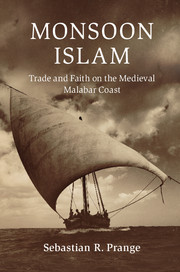
Monsoon Islam: Trade and Faith on the Medieval Malabar Coast
LOUIS WERNER
Sebastian R. Prange
2018, Cambridge UP, 978-1-10842-438-7, $120 hb.
Western scholars of Islam and its myriad civilizations have long qualified the religion by many geographical and cultural subheadings: African Islam, folk Islam, urban Islam, or the like. This is the first academic attempt to analyze Islam through the lens of a weather pattern. Prange looks at India’s Malabar Coast, bilad al-filfil (land of pepper), so named by Arab merchants who arrived on the monsoon trade winds beginning even before the first Islamic century. He argues that Islamic expression there and at the far ends of all its commercial traces on the Indian Ocean littoral is a synthesis explained by the seasonality of these traders’ arrivals and departures, permanent settlements, and their commercial and personal interactions among Hindu and fellow Muslim South Indians. By all readings, Prange’s analysis is a success.
You may also be interested in...

Omani Author Zahran Alqasmi's Story About Life, Land and Honey
In his third novel, about a beekeeper living in Oman’s mountainous interior, local author Zahran Alqasmi grapples with a changing landscape around him.
Naguib Mahfouz Medal for Literature Winner Gives Voice to Marginalized
“No one else will be destined to write a life story as squalid as mine, although it’s all true,” comments the elusive protagonist of Algerian author Ahmed Taibaoui’s noir novel.
British Museum Curator Takes Readers on Journey Spanning 6,000 Years
Southeast Asia curator Alexandra Green takes readers on a journey spanning 6,000 years, highlighting objects from Neolithic stone tools to contemporary paintings.